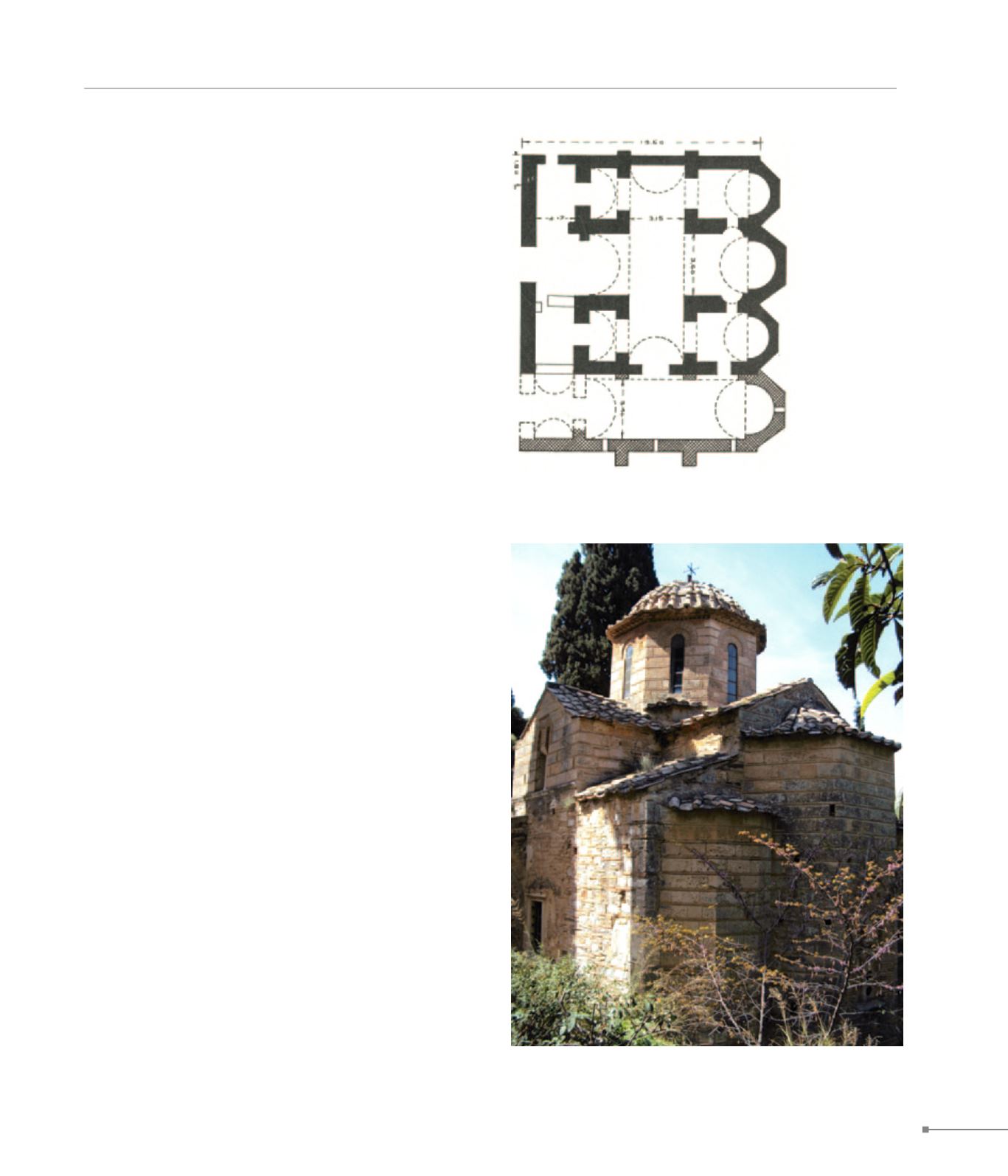
Frangokklesia.
Athens. Athenai.
CENTRAL GREECE
195
256. Kaisariani monastery, catholicon (Μονή Καισαριανής, καθολικό)
255. Frangokklesia, ground plan (Φραγκοκκλησιά, κάτοψη)
255.
Frangokklesia.
To the S of the Kaisiariani monastery survive the ruins of Fran-
gokklesia or Saint Mark, a transitional, cross-in-square church
probably of the 10th c., to which an aisle was added in the S,
possibly in the Frankish era. This church occupied the site of an
Early Christian basilica.
256.
Kaisariani Monastery.
In the Mid-Byzantine period, the Hymettos mountain range
was a significant monastic centre. The Kaisariani monastery
was the most prominent, but little is known about its history.
Its catholicon is a semi-complex, cross-in-square church dating
from the late 11th c., possibly circa 1100. The refined masonry
is characterised by the absence of bricks between joints and
the wide use of porous elements. The narthex and the chapel
of Saint Anthony are subsequent additions. Within the precinct
of the monastery survives a bath (11th c.) of which the interior
is divided in three spaces, and was once part of the building
complex in the SE corner of the precinct recently dated to the
Late Byzantine period.
257.
Athens. Athenai.
At the dawn of the Early Christian period, Athens was limited
to the Late Roman wall, built circa 280-2 after its predecessor’s
destruction by the Herulians. The city soon recovered and from
the mid-4th c. it started to expand outside the fortification wall to
the regions of Olympieion and Makrygianni. Many of the build-
ings discovered were associated with schools of philosophy,
while there were common use facilities such as the balaneion
excavated at Vasilissis Amalias Avenue during metro works, or
the reconstructed Pompeion (building for preparation of rituals)
at Kerameikos. Visigoth Alaric I’s raid in 396 stopped Athens’
development only temporarily. The 5th c. was a prosperous
period characterised by the dynamic presence of Christianity,
which gained ground constantly. In the first half of the centu-
ry the first Christian church – the Tetraconch, later the Meg-
ale Panagia – was built within the city walls, in the middle of
Hadrian’s Library. Contemporary with the Tetraconch was the
complex that occupied the space of the ancient Agora, the “Pal-
ace of the Giants”, which was possibly an administrative centre.
Both buildings were associated with Eudocia, Athenian wife of
Emperor Theodosius II. At roughly the same time the Ilissos
basilica was erected, which is believed to have been dedicated


